- KyotoKimonoShop
- Haori
- 0 likes
- 12444 views
- 0 comments
羽織 HAORI
haori is a traditional Japanese jacket worn over a kimono. It is typically made of silk or synthetic fabric and is designed to be worn open in the front, revealing the kimono underneath. Haori have a wide collar and are often embroidered or decorated with different patterns and designs. They are most commonly worn by men, but can also be worn by women. The length of haori can vary depending on the occasion, with formal haori being longer than casual ones. The haori jacket is considered as one of the traditional attire in Japan and also considered as a formal wear.
Origin of Haori
The origins of the haori can be traced back to the Heian period in Japan (794-1185), when it was worn by nobles as a form of outerwear over their kimonos. During this time, the haori was known as a kariginu, and was typically made of silk or fine brocade. It was a long, loose-fitting jacket that was worn open in the front and had wide sleeves.
As time went on, the haori evolved to become shorter and more form-fitting, and it was eventually adopted by the samurai class as a form of formal wear. During the Edo period (1603-1868), haori became even more popular, and they were worn by both men and women.
The haori was also worn as a military uniform in Japan, as during the Meiji period (1868-1912), the country's military officials wore Haori with different colors, patterns, and designs depending on their rank. After World War II, the haori was worn less frequently, and it became more of a traditional garment, worn on special occasions.
Nowadays, haori are worn by both men and women in Japan, typically at formal events like weddings and religious ceremonies. They are also worn by traditional performing artists, as part of their costume.
what is the material of Haori?
Haori are typically made of silk or synthetic fabric. Historically, they were made of silk or fine brocade, and they were highly valued for their luxurious feel and appearance. Silk haori are considered to be more traditional, and they are often made with intricate embroidery and other decorative elements. They are more expensive than synthetic ones, and they have the characteristic of breathable, comfortable, light and soft material.
Nowadays, many haori are made from synthetic materials like polyester or rayon, which are more affordable and easy to care for. These materials can mimic the look and feel of silk, and they are available in a wide variety of colors and patterns. Some of haori are also made of wool, or cotton, and also can be blended with some other fabrics.
Overall, the choice of material for a haori will depend on the occasion for which it will be worn, as well as personal preference and budget.
What are the colors of Haori?
Haori come in a wide range of colors, but traditionally they were made in subdued tones like black, navy blue, dark grey and dark brown. These colors were favored by the samurai class as they were considered more formal and appropriate for occasions like ceremonies and official gatherings. The colors also reflect the elegant, subdued style of traditional Japanese fashion.
However, there are also other colors like red, dark green, or dark purple that can be seen, and these colors were also used for haori in the past, although less frequently. They are often used for more casual or festive occasions.
In recent times, with the use of synthetic fabrics and modern dyeing techniques, haori are available in a much wider range of colors. You can see bright colors like pink, yellow, and green or even patterns like floral or geometric designs. These colors and patterns are often used to make haori that are more modern or casual, rather than traditional.
In conclusion, colors and patterns on haori have a wide range of choices, that can reflect personal taste and the occasion it will be worn.
What is the difference between Men's Haori and Women's Haori?
Traditionally, there is not a significant difference between men's and women's haori in terms of design and style. Both men's and women's haori are typically made of silk or synthetic fabric and are designed to be worn open in the front, revealing the kimono underneath. They both have wide collars and are often embroidered or decorated with different patterns and designs.
The main difference between men's and women's haori is the size, with men's haori generally being larger than women's haori, to allow for the kimono worn underneath. Additionally, men's haori tend to have wider sleeves than those of women's haori.
However, in modern times, some men's haori may be designed more simple, with less embellishments, to reflect the more formal and subdued style that is traditionally associated with men's attire. On the other hand, women's haori may have more intricate designs and decorations, such as floral patterns, or a more vibrant color options.
In summary, the main difference between men's and women's haori is the size, but there could also be subtle differences in design and style reflecting personal preference and the occasion it will be worn.
What are the different types of Haori?
There are several different types of haori, each with its own unique characteristics and traditional uses. Some of the most common types of haori include:
-
Iromuji haori: This type of haori is made of a solid-colored silk or synthetic fabric, and it is usually worn with a solid-colored kimono of the same color or a slightly different shade. It is considered to be a formal, elegant style, and it is often worn by men and women at special occasions such as weddings and religious ceremonies.
-
Furisode haori: This type of haori is similar to the iromuji haori, but it features long, flowing sleeves that reach the ankle. This haori is typically worn by young unmarried women and it is considered to be a more formal and feminine style.
-
Komon haori: This type of haori is made of a silk or synthetic fabric that is decorated with small repeating patterns. The patterns can be floral, geometric, or abstract designs. It is considered to be a casual style, and it is often worn by men and women at less formal occasions.
-
Uchikake haori: This type of haori is worn over a bridal kimono, and it is typically made of a heavy silk or synthetic fabric, decorated with gold or silver thread and adorned with intricate designs. The Uchikake haori is used in traditional Japanese wedding, it is considered to be a very formal and ceremonial style.
-
Aikido haori: This type of haori is worn by Aikido practitioners, it is typically made of cotton or a blend of cotton with synthetic fabric and it's a more light and comfortable haori. It features the crest or emblem of the Aikido dojo.
From Japanese craftsmanship, a true work of art, authentic and unique, the new & antique Japanese haori on sale in our shop is a traditional Japanese jacket, which is worn over the traditional Japanese kimono, Yukata & other traditional Japanese clothing . The Japanese Haori is usually made of high quality silk, hemp or wool, the perfect finishes are neat. Its length goes down to the knees or ankles depending on the type with wide sleeves. The front of the haori generally has hooks allowing to hang cords called himo, allowing to close the Haori without crossing it unlike the Kimono.
21 Things to Know About Japanese Haori Jackets
21 Things to Know About Japanese Haori Jackets
Haori are traditional Japanese jackets with a rich history and significant place in Japanese fashion. Here are 21 interesting things to know about them:
Origins and History
1. Origin
The haori originated in Japan and was originally worn by men of the samurai class.
2. Initial Use
Historically, the haori was used to protect the kimono from the elements and to add an extra layer in cold weather.
3. Accessibility
Initially reserved for the aristocracy and samurais, it became accessible to everyone over time.
Features and Design
4. Unisex
Although originally designed for men, the haori is now worn by both men and women.
5. Design
Haoris often feature elaborate patterns and colors, reflecting Japanese aesthetics.
6. Length
They are typically mid-thigh in length and have wide sleeves.
Usage and Fashion
7. Closure
Unlike kimonos, haoris are not tied with an obi (belt). They are usually worn open or tied with small strings called himo.
8. Materials
They are traditionally made from silk, cotton, or other fabrics.
9. Contemporary Fashion
They have been adopted into contemporary fashion as an elegant and practical piece.
Symbolism and Culture
10. Symbolism
They can symbolize status and personal taste, similar to other forms of traditional Japanese clothing.
11. Weddings
In some Japanese weddings, the haori is worn by the groom.
12. Tea Ceremonies
They are also used in traditional tea ceremonies.
Care and Collection
13. Care
They require special care, particularly regarding cleaning and preservation.
14. Antiques
Ancient haoris are sometimes collected as artworks.
Conclusion
15. Evolution
The style and function of the haori continue to evolve, incorporating modern design elements while staying true to their traditional roots.

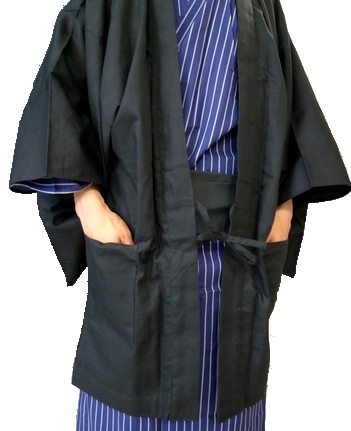
 JAPANESE HAORI (Left)
JAPANESE HAORI (Left)
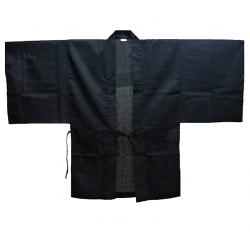
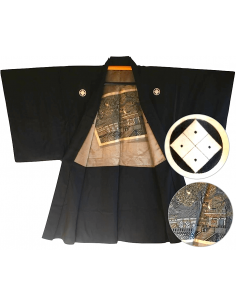

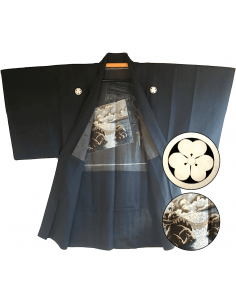

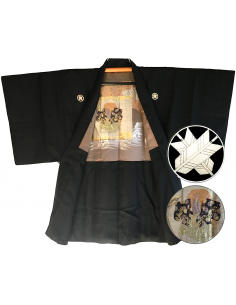



Comments (0)